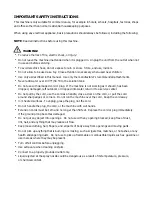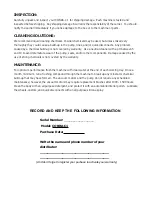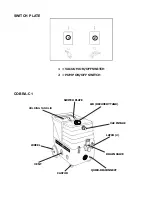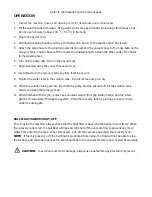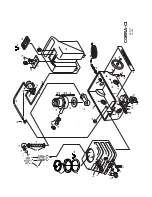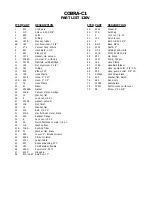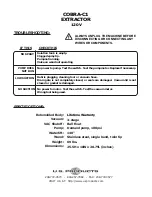
Refer to the drawings on the previous page
OPERATION
1
Inspect the machine, hoses, and cleaning tools for cleanliness and completeness.
2
Fill the solution tank with water. Using warm water may be a benefit in cleaning effectiveness, but
do not use hot water (above 130 °F / 54 °C) in the tank.
3
Plug in the power cord.
4
Add liquid cleaning solution, with a pH of between 6 and 9, to the solution tank. Mix it well.
5
Attach the spray hose to the solution quick disconnect and the vacuum hose to the hose barb on the
recovery tank. Pull the hoses off the real to the desired length. Attach the other ends of the hoses
to the cleaning tool.
6
Turn on the pump (2). Turn on the vacuum (1).
7
Begin cleaning using the correct hoses and tool.
8 Use defoamer in the recovery tank any time foaming occurs.
9
Monitor the water level in the solution tank. Do not let the pump run dry.
10 When the solution tank gets low, turn both the pump and the vacuum off, fill the solution tank,
empty and clean the recovery tank.
11 When finished with the job, remove any unused solution from the solution tank, and run a few
gallons of clean water through the system. Drain the recovery tank by placing a bucket or drain
under the drain gate.
BALL FLOAT VACUUM SHUT-OF
F
Prior to using the machine, always check that the float filter is clean and the ball can travel freely. When
the recovery tank is full, the ball float will rise and will shut off the vacuum flow to prevent any more
water from entering the tank. When this occurs, turn off the vacuum and empty the recovery tank.
NOTE: if foam is present, or if the ball float is prevented from rising, the float will not be able to stop
the air flow, and the tank may over fill. Water damage to the vacuum motors is not covered by warranty.
CAUTION: to avoid vacuum motor damage, always use a defoamer any time foam is present.


